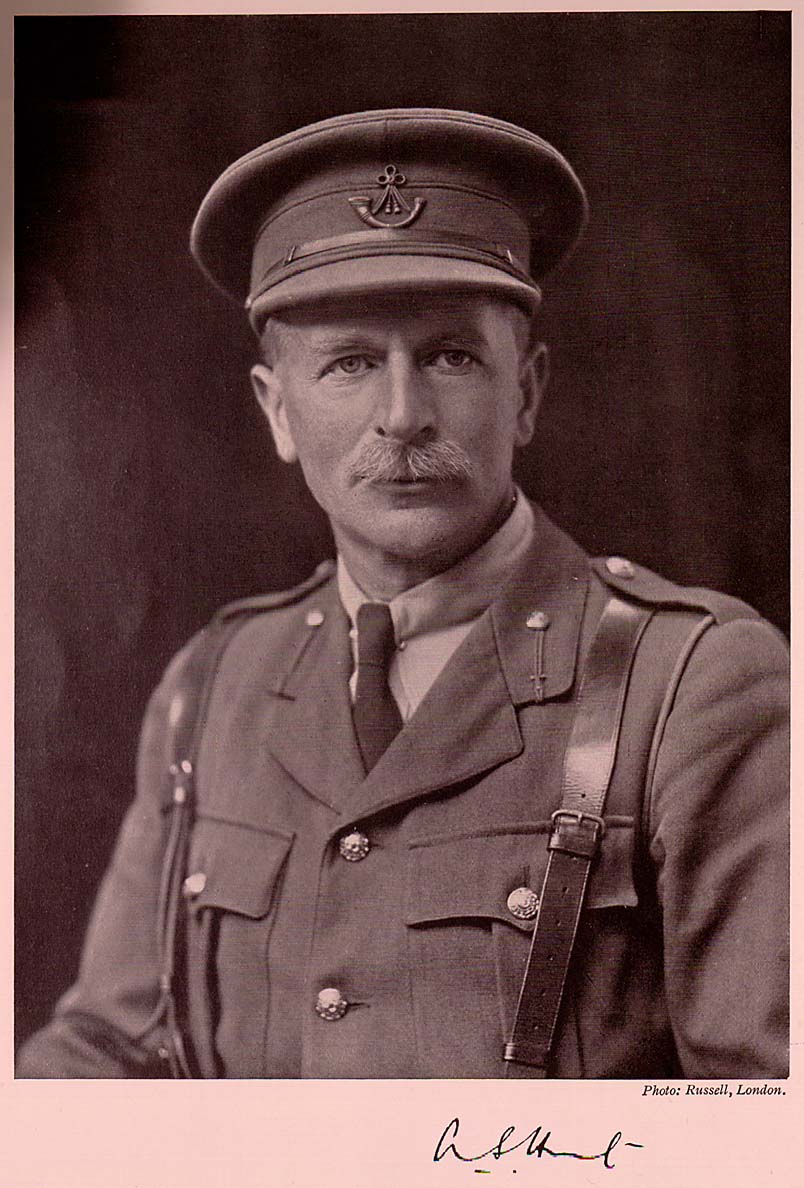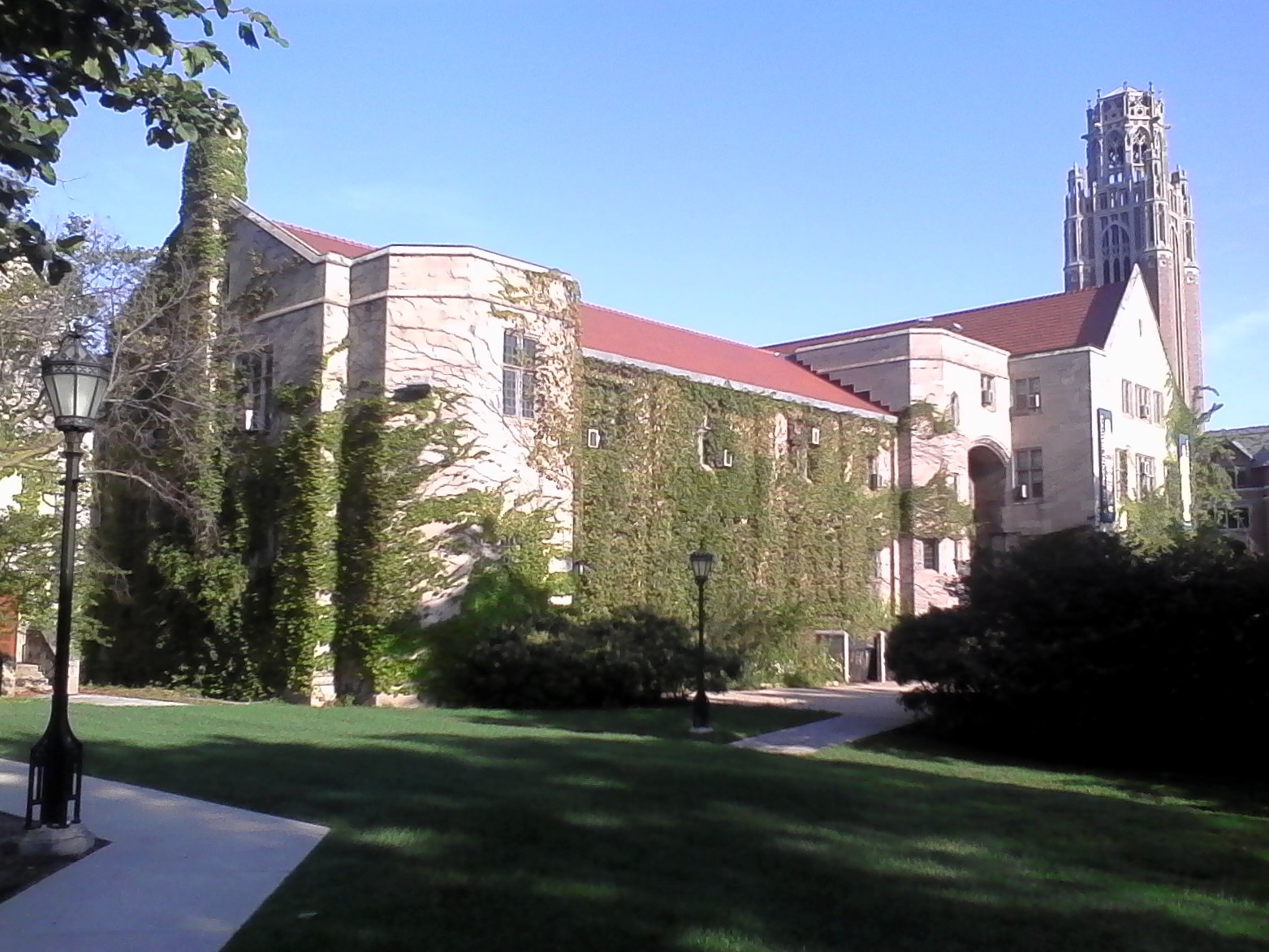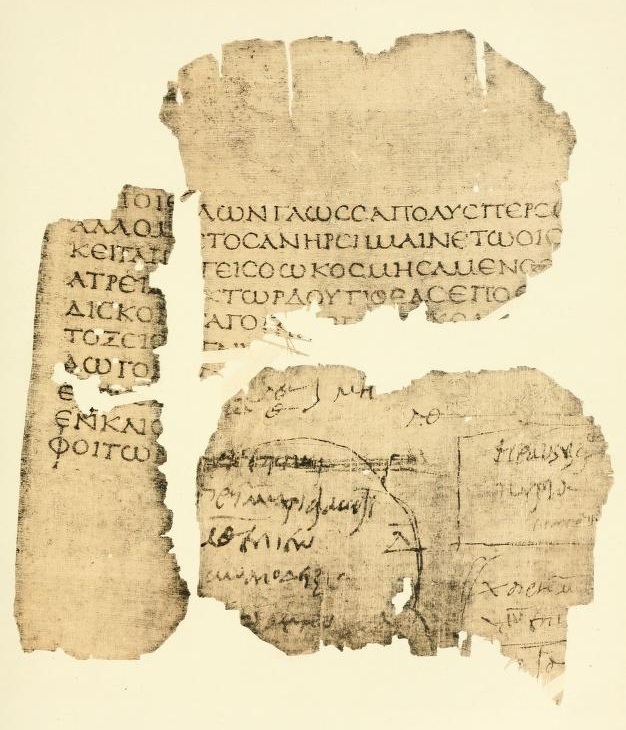|
Papyrus Oxyrhynchus 21
Papyrus Oxyrhynchus 21 (P. Oxy. 21) is a fragment of the second book of the ''Iliad'' (Β, 745-764), written in Greek. It was discovered by Grenfell and Hunt in 1897 in Oxyrhynchus. The fragment is dated to the first or second century. It is housed in the University of Chicago Oriental Institute. The text was published by Grenfell and Hunt in 1898.P. Oxy. 21 at the Oxyrhynchus Online The manuscript was written on in the form of a roll. The measurements of the fragment are 200 by 147 mm. The fragment contains 20 lines of text. The text is written in a large round upright |
Iliad
The ''Iliad'' (; grc, Ἰλιάς, Iliás, ; "a poem about Ilium") is one of two major ancient Greek epic poems attributed to Homer. It is one of the oldest extant works of literature still widely read by modern audiences. As with the ''Odyssey'', the poem is divided into 24 books and contains 15,693 lines in its most widely accepted version, and was written in dactylic hexameter. Set towards the end of the Trojan War, a ten-year siege of the city of Troy by a coalition of Mycenaean Greek states, the poem depicts significant events in the siege's final weeks. In particular, it depicts a fierce quarrel between King Agamemnon and a celebrated warrior, Achilles. It is a central part of the Epic Cycle. The ''Iliad'' is often regarded as the first substantial piece of European literature. The ''Iliad'', and the ''Odyssey'', were likely written down in Homeric Greek, a literary amalgam of Ionic Greek and other dialects, probably around the late 8th or early 7th century BC. Homer's ... [...More Info...] [...Related Items...] OR: [Wikipedia] [Google] [Baidu] |
Greek Language
Greek ( el, label=Modern Greek, Ελληνικά, Elliniká, ; grc, Ἑλληνική, Hellēnikḗ) is an independent branch of the Indo-European family of languages, native to Greece, Cyprus, southern Italy (Calabria and Salento), southern Albania, and other regions of the Balkans, the Black Sea coast, Asia Minor, and the Eastern Mediterranean. It has the longest documented history of any Indo-European language, spanning at least 3,400 years of written records. Its writing system is the Greek alphabet, which has been used for approximately 2,800 years; previously, Greek was recorded in writing systems such as Linear B and the Cypriot syllabary. The alphabet arose from the Phoenician script and was in turn the basis of the Latin, Cyrillic, Armenian, Coptic, Gothic, and many other writing systems. The Greek language holds a very important place in the history of the Western world. Beginning with the epics of Homer, ancient Greek literature includes many works of lasting impo ... [...More Info...] [...Related Items...] OR: [Wikipedia] [Google] [Baidu] |
Bernard Grenfell
Bernard Pyne Grenfell FBA (16 December 1869 – 18 May 1926) was an English scientist and Egyptologist. Life Grenfell was the son of John Granville Grenfell FGS and Alice Grenfell. He was born in Birmingham and brought up and educated at Clifton College in Bristol, where his father taught. He obtained a scholarship in 1888 and enrolled at The Queen's College, Oxford.Bell, H. (2004-09-23). Grenfell, Bernard Pyne (1869–1926), papyrologist. Oxford Dictionary of National Biography. Retrieved 18 Jan. 2018, Selink/ref> With his friend and colleague, Arthur Surridge Hunt, he took part in the archaeological dig of Oxyrhynchus and discovered many ancient manuscripts known as the Oxyrhynchus Papyri, including some of the oldest known copies of the New Testament and the Septuagint. Other notable finds are extensive, including previously unknown works by known classical authors. The majority of the find consists of thousands of documentary texts. Parabiblical material, such as copies of ... [...More Info...] [...Related Items...] OR: [Wikipedia] [Google] [Baidu] |
Arthur Surridge Hunt
Arthur Surridge Hunt, FBA (1 March 1871 – 18 June 1934) was an English papyrologist. Hunt was born in Romford, Essex, England. Over the course of many years, Hunt, along with Bernard Grenfell, recovered many papyri from excavation sites in Egypt, including the Oxyrhynchus Papyri. He worked with Campbell Cowan Edgar on a translation of the Zenon Papyri from the original Greek and Demotic. Publications *Grenfell, Bernard Pyne and Hunt, Arthur Surridge, ''Sayings of Our Lord from an early Greek Papyrus'' (Egypt Exploration Fund; 1897). *Grenfell, Bernard Pyne, Hunt, Arthur Surridge, and Hogarth, David George, Fayûm Towns and Their Papyri' (London 1900). *Grenfell, Bernard Pyne and Hunt, Arthur Surridge, eds., Hellenica Oxyrhynchia cum Theopompi et Cratippi Fragmentis' (Oxford: Clarendon Press, 1909). *Hunt, Arthur Surridge, "Papyri and Papyrology." ''The Journal of Egyptian Archaeology'' 1, no. 2 (1914): 81–92. See also * Oxyrhynchus Oxyrhynchus (; grc-gre, Ὀξύρ ... [...More Info...] [...Related Items...] OR: [Wikipedia] [Google] [Baidu] |
Oxyrhynchus
Oxyrhynchus (; grc-gre, Ὀξύρρυγχος, Oxýrrhynchos, sharp-nosed; ancient Egyptian ''Pr-Medjed''; cop, or , ''Pemdje''; ar, البهنسا, ''Al-Bahnasa'') is a city in Middle Egypt located about 160 km south-southwest of Cairo in Minya Governorate. It is also an archaeological site, considered one of the most important ever discovered. Since the late 19th century, the area around Oxyrhynchus has been excavated almost continually, yielding an enormous collection of papyrus texts dating from the Ptolemaic Kingdom and Roman Egypt. They also include a few vellum manuscripts, and more recent Arabic manuscripts on paper (for example, the medieval P. Oxy. VI 1006) History Ancient Egyptian Era Oxyrhynchus lies west of the main course of the Nile on the Bahr Yussef, a branch that terminates in Lake Moeris and the Faiyum oasis. In ancient Egyptian times, there was a city on the site called Per-Medjed, named after the medjed, a species of elephantfish of the Nile ... [...More Info...] [...Related Items...] OR: [Wikipedia] [Google] [Baidu] |
University Of Chicago Oriental Institute
The Oriental Institute (OI), established in 1919, is the University of Chicago's interdisciplinary research center for ancient Near Eastern ("Orient") studies and archaeology museum. It was founded for the university by professor James Henry Breasted with funds donated by John D. Rockefeller, Jr. It conducts research on ancient civilizations throughout the Near East, including at its facility, Chicago House, in Luxor, Egypt. The institute publicly exhibits an extensive collection of artifacts related to ancient civilizations at its on-campus building in Hyde Park, Chicago. According to anthropologist William Parkinson of the Field Museum, the OI's highly focused "near Eastern, or southwest Asian and Egyptian" collection is one of the finest in the world. History In the early 20th century, James Henry Breasted built up the collection of the university's Haskell Oriental Museum, which he oversaw along with his field work, and teaching duties. He dreamed, however, of establishi ... [...More Info...] [...Related Items...] OR: [Wikipedia] [Google] [Baidu] |
Papyrus
Papyrus ( ) is a material similar to thick paper that was used in ancient times as a writing surface. It was made from the pith of the papyrus plant, '' Cyperus papyrus'', a wetland sedge. ''Papyrus'' (plural: ''papyri'') can also refer to a document written on sheets of such material, joined side by side and rolled up into a scroll, an early form of a book. Papyrus is first known to have been used in Egypt (at least as far back as the First Dynasty), as the papyrus plant was once abundant across the Nile Delta. It was also used throughout the Mediterranean region. Apart from a writing material, ancient Egyptians employed papyrus in the construction of other artifacts, such as reed boats, mats, rope, sandals, and baskets. History Papyrus was first manufactured in Egypt as far back as the fourth millennium BCE.H. Idris Bell and T.C. Skeat, 1935"Papyrus and its uses"(British Museum pamphlet). The earliest archaeological evidence of papyrus was excavated in 2012 and 2 ... [...More Info...] [...Related Items...] OR: [Wikipedia] [Google] [Baidu] |
Uncial Script
Uncial is a majuscule Glaister, Geoffrey Ashall. (1996) ''Encyclopedia of the Book''. 2nd edn. New Castle, DE, and London: Oak Knoll Press & The British Library, p. 494. script (written entirely in capital letters) commonly used from the 4th to 8th centuries AD by Latin and Greek scribes. Uncial letters were used to write Greek and Latin, as well as Gothic and Coptic. Development Early uncial script most likely developed from late rustic capitals. Early forms are characterized by broad single-stroke letters using simple round forms taking advantage of the new parchment and vellum surfaces, as opposed to the angular, multiple-stroke letters, which are more suited for rougher surfaces, such as papyrus. In the oldest examples of uncial, such as the fragment of '' De bellis macedonicis'' in the British Library, of the late 1st-early 2nd century, all of the letters are disconnected from one another, and word separation is typically not used. Word separation, however, is characteri ... [...More Info...] [...Related Items...] OR: [Wikipedia] [Google] [Baidu] |
Rough Breathing
In the polytonic orthography of Ancient Greek, the rough breathing ( grc, δασὺ πνεῦμα, dasỳ pneûma or ''daseîa''; la, spīritus asper) character is a diacritical mark used to indicate the presence of an sound before a vowel, diphthong, or after rho. It remained in the polytonic orthography even after the Hellenistic period, when the sound disappeared from the Greek language. In the monotonic orthography of Modern Greek phonology, in use since 1982, it is not used at all. The absence of an sound is marked by the smooth breathing. The character, or those with similar shape such as , have also been used for a similar sound by Thomas Wade (and others) in the Wade–Giles system of romanization for Mandarin Chinese. Herbert Giles and others have used a left (opening) curved single quotation mark for the same purpose; the apostrophe, backtick, and visually similar characters are often seen as well. History The rough breathing comes from the left-hand half of th ... [...More Info...] [...Related Items...] OR: [Wikipedia] [Google] [Baidu] |
Oxyrhynchus Papyri
The Oxyrhynchus Papyri are a group of manuscripts discovered during the late nineteenth and early twentieth centuries by papyrologists Bernard Pyne Grenfell and Arthur Surridge Hunt at an ancient rubbish dump near Oxyrhynchus in Egypt (, modern ''el-Bahnasa''). The manuscripts date from the time of the Ptolemaic (3rd century BC) and Roman periods of Egyptian history (from 32 BC to the Muslim conquest of Egypt in 640 AD). Only an estimated 10% are literary in nature. Most of the papyri found seem to consist mainly of public and private documents: codes, edicts, registers, official correspondence, census-returns, tax-assessments, petitions, court-records, sales, leases, wills, bills, accounts, inventories, horoscopes, and private letters. Although most of the papyri were written in Greek, some texts written in Egyptian ( Egyptian hieroglyphics, Hieratic, Demotic, mostly Coptic), Latin and Arabic were also found. Texts in Hebrew, Aramaic, Syriac and Pahlavi have so far ... [...More Info...] [...Related Items...] OR: [Wikipedia] [Google] [Baidu] |
Papyrus Oxyrhynchus 20
Papyrus Oxyrhynchus 20 (P. Oxy. 20) consists of twelve fragments of the second book of the ''Iliad'' (Β, 730–828), written in Greek. It was discovered by Grenfell and Hunt in 1897 in Oxyrhynchus. The fragment is dated to the second century. It is housed in the British Library (Department of Manuscripts). The text was published by Grenfell and Hunt in 1898.P. Oxy. 20 at the Oxyrhynchus Online The manuscript was written on in the form of a roll. The measurements of the largest fragment are 145 by 80 mm. The text is written in a large upright calligraphic |
Papyrus Oxyrhynchus 22
Papyrus Oxyrhynchus 22 (P. Oxy. 22) contains fragments of the ''Oedipus Tyrannus'' by Sophocles, written in Greek. It was discovered by Grenfell and Hunt in 1897 in Oxyrhynchus. The fragment is dated to the fifth century. It is housed in the British Library (Department of Manuscripts). The text was published by Grenfell and Hunt in 1898.P. Oxy. 22 at the Oxyrhynchus Online The manuscript was written on in the form of a codex. The measurements of the fragment are 80 by 93 mm. The text is written in a small round upright formal |








